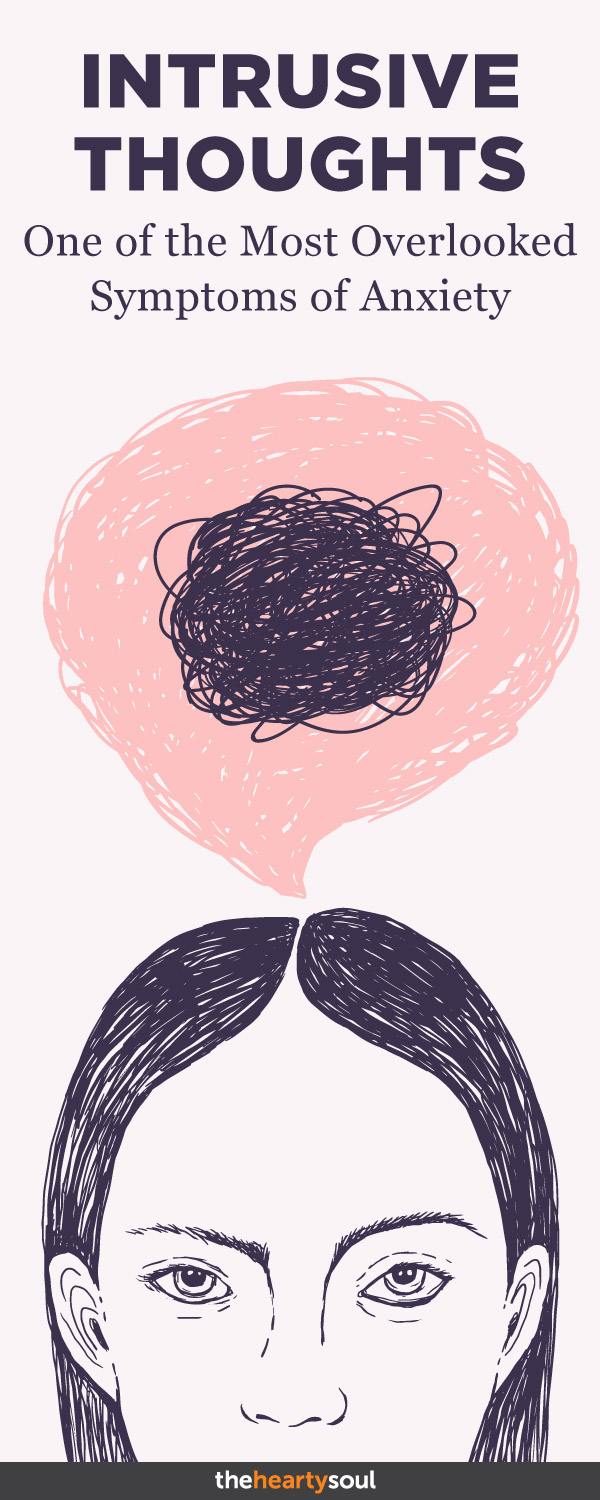Over the last few years, anxiety disorders have risen to the top of America’s most common mental illnesses. Every single year, according to the Anxiety and Depression Association of America (ADAA), they affect 40,000,000 people aged 18 and older. [1] That’s almost 1 in every 5 people! The silver lining in all of this is that people have are more aware (and hopefully more understanding), now more than ever, of anxiety disorders.
You know all the most common symptoms of anxiety and depression…
They can include: [2]
- Feelings of sadness or emptiness
- Extreme irritability over small or insignificant things
- Anger management issues
- Anxiety and restlessness
- Loss of interest in activities (including sex)
- Being fixated on past events or regrets
However, there is one element of living with anxiety that is either overlooked or kept hidden by a lot of people: intrusive thoughts.
What Are Unwanted Intrusive Thoughts?

Psychologists Martin Seif and Sally Winston describe unwanted intrusive thoughts as “stuck thoughts that cause great distress” and “seem to come out of nowhere, arrive with a whoosh, and cause a great deal of anxiety.”
You might be thinking thoughts are just thoughts. But, the main cause of anxiety is rooted in the fact that the individuals having intrusive thoughts start thinking they might actually carry them out (on themselves or others).
Intrusive thoughts can take many shapes and forms. Katelyn Son, in a deeply personal post for POPSUGAR, shared that hers first came in the form of movie-like monsters as a child that would give her physical symptoms of fear. [3]
When psychologist and new mom Hannah Reese first had her son, she explains not being able to stand at the top of her staircase without imagining “dropping him down the stairs and seeing his tiny, helpless body writhing in pain.” [4]
People, especially if they’re living with anxiety or depression, have these kinds of thoughts more often than you think…
Scary Images? Yes! Normal? Yes!

As common or normal as they are, however, the people who actually have to face intrusive thoughts day in and day out don’t always feel like they’re normal. Fortunately, there is something you need to know when it comes to intrusive thoughts: they only have as much power as you give them…
Over the years, Son has learned this truth and is sharing it so others don’t have to suffer and feel powerless against these thoughts.
Where Do Intrusive Thoughts Come From?
“I’ve learned that these intrusive thoughts are our brain’s coping mechanism for fear. They distract us from the anxiety we are feeling in real life with a fictitious event we can focus on instead. This is your brain’s way of trying to help you with anxiety you’re experiencing in real life. It’s as if your brain is telling you, ‘Look, I know you’re afraid, but it could be worse, so whatever is going on isn’t that bad.’” [3]
Of course, this doesn’t mean you can snap your fingers and say goodbye to intrusive thoughts just like that. People like Son still face them, but keep personal tools that help them recognize and beat those thoughts in their arsenal.
Harvard researchers even put this idea to the test using a “white bear.” The study was based on the idea that if you tell someone to think of anything they want EXCEPT a white bear, they will NOT be able to get the idea of a white bear out of their heads. And that’s exactly what happened with the study’s participants; every time they wanted to see how they were succeeding in blocking out the white bear, they would – oops – think of the white bear. [4,5]
The results of this study seemed to suggest that the more you try and block out, for example, an intrusive thought, the more likely it is to keep popping into your head. If you can’t help but think of anything else, then what can you do?
How to Cope with (and Beat) Intrusive Thoughts
Knowing that trying to block out intrusive thoughts might not be the best course of action, there are some tips that can help you or a loved one overcome them. Seif and Winston have outlined some very practical tips for the ADAA. [1]
- Recognize your intrusive thoughts and label them as such
- Remind yourself that you can’t control when intrusive thoughts come up
- Do not try to push them out of your head but, instead, accept and allow them come in
- Be patient
- Don’t dwell on intrusive thoughts, but expect that they will likely return
- Once the intrusive thoughts pass, continue doing what you were doing before they surfaced
If you know someone who may be living with anxiety or depression, please understand that this is something they could be living with. Whether you bring it up or they do, the best thing you can do is actively listen and show them empathy. The safer they feel to open up about intrusive thoughts and share their struggles, the better. As Son puts it, so personally and perfectly: [3]
“If someone close to you experiences these intrusive thoughts, just love and support them. That understanding will help ease the anxiety we feel from even having these thoughts. Know, though, that this is not a problem you can solve; this is a process that we will go through regardless.”

[1] Facts & Statistics. (n.d.). Retrieved from https://adaa.org/about-adaa/press-room/facts-statistics
[2] Depression: Facts, Statistics, and You. (n.d.). Retrieved from https://www.healthline.com/health/depression/facts-statistics-infographic#8
[3] Son, K. (2018, June 22). The Debilitating Anxiety Symptom No One Ever Talks About. Retrieved from https://www.popsugar.com/fitness/Normal-Have-Horrible-Thoughts-44190086
[4] Reese, H., Ph.D. (n.d.). Intrusive Thoughts: Normal or Not? Retrieved from https://www.psychologytoday.com/ca/blog/am-i-normal/201110/intrusive-thoughts-normal-or-not
[5] Konnikova, M. (2012, January 12). What Do Polar Bears and Social Faux Pas Have in Common? Retrieved from https://blogs.scientificamerican.com/literally-psyched/what-do-polar-bears-and-social-faux-pas-have-in-common/

